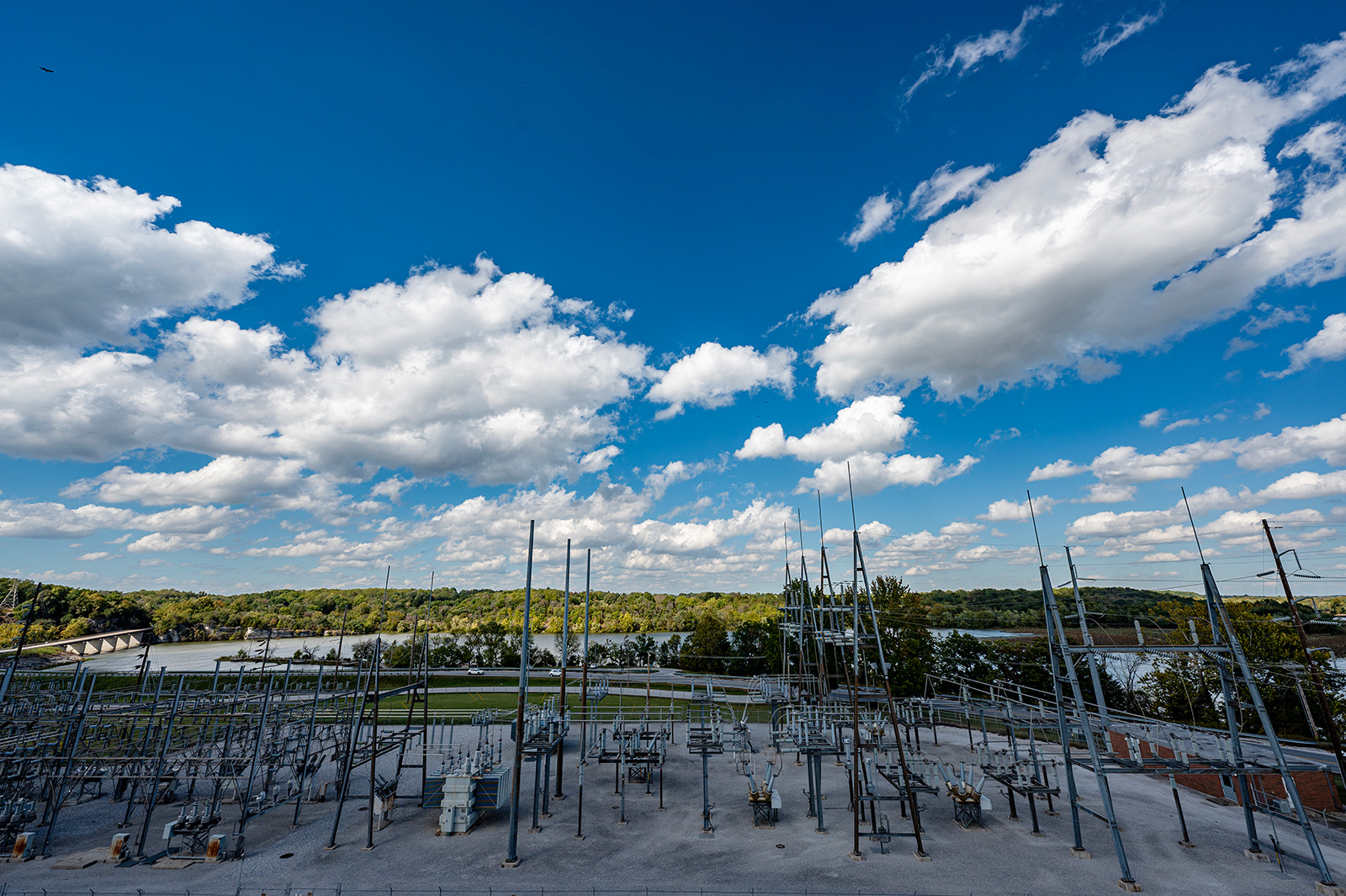Eco-islands, an entertainment district and one of the world’s largest water trails. Improved lake access, an expanded boathouse and an adventure hub. These are just a few of the many possibilities for the future of Lake Springfield.
More than a year and a half after Springfield received an $800,000 grant from the U.S. Economic Development Administration — supplemented by $200,000 in locally-matched funding — to develop a master plan for Lake Springfield, the possibilities and recommendations were revealed to the public on Oct. 12.
The possibilities are expansive, expensive and could take years — or even decades — to come to fruition. The plan is just that, a plan, without any funding attached to any of its proposed projects, many of which will require a good deal of private investment.

The final draft will still need to be formally adopted by the Springfield City Council and the Board of Public Utilities. It’s likely to be voted on in late 2023 or early 2024. The plan reveals the results of months of public engagement, economic and social impact assessments, water quality testing and brainstorming by a variety of stakeholders, including the consulting team led by Springfield-based Crawford, Murphy and Tilly (CMT).
“One important part about this whole process and that’s somewhat unique to what the city has done[…] is that we took in a lot of community input, especially during Forward SGF, the strategic planning process that told us that we need to be bolder and inspire vision in the community, put forward ideas and plans that will basically stir men’s souls to come up with making us a more vibrant and more exciting place,” said Cora Scott, the City of Springfield’s director of public information and civic engagement. “So this certainly falls in line with that.”
Adaptive reuse of power plant
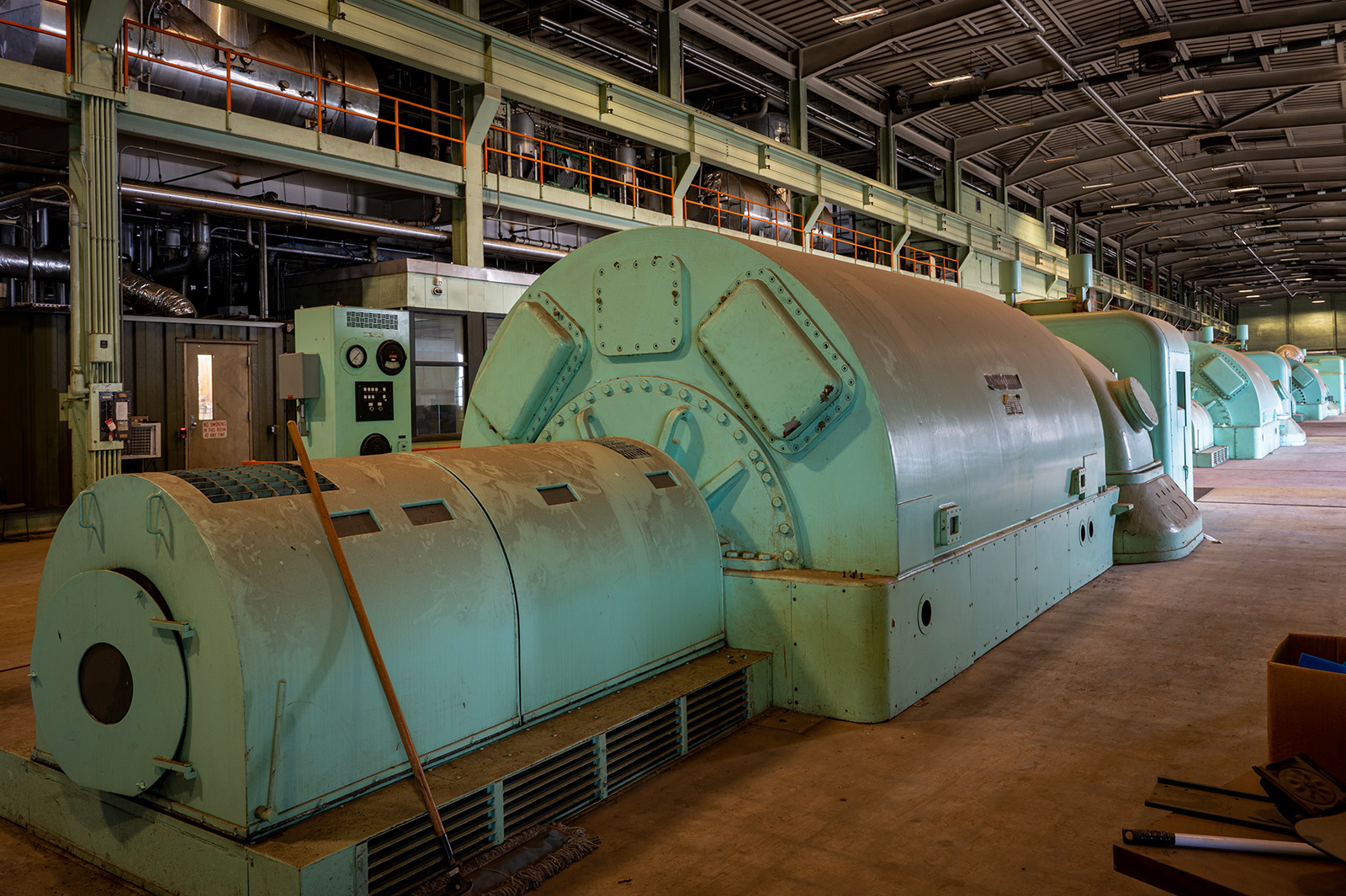
While the lake itself is the plan’s focal point, the decommissioned James River Power Station was the harbinger of the planning process. While the adjacent City Utilities power substation will remain, and a few components of the power plant still need to be phased out of use, its retirement eliminates the original use for the lake and dam. The utility needed water as a cooling mechanism for the coal-fired power station.
The master plan identifies ways the power plant and the surrounding land on the south end of the lake can be adapted for other uses. The consultants narrowed down the ideas with the most potential: an entertainment district or an adventure hub.
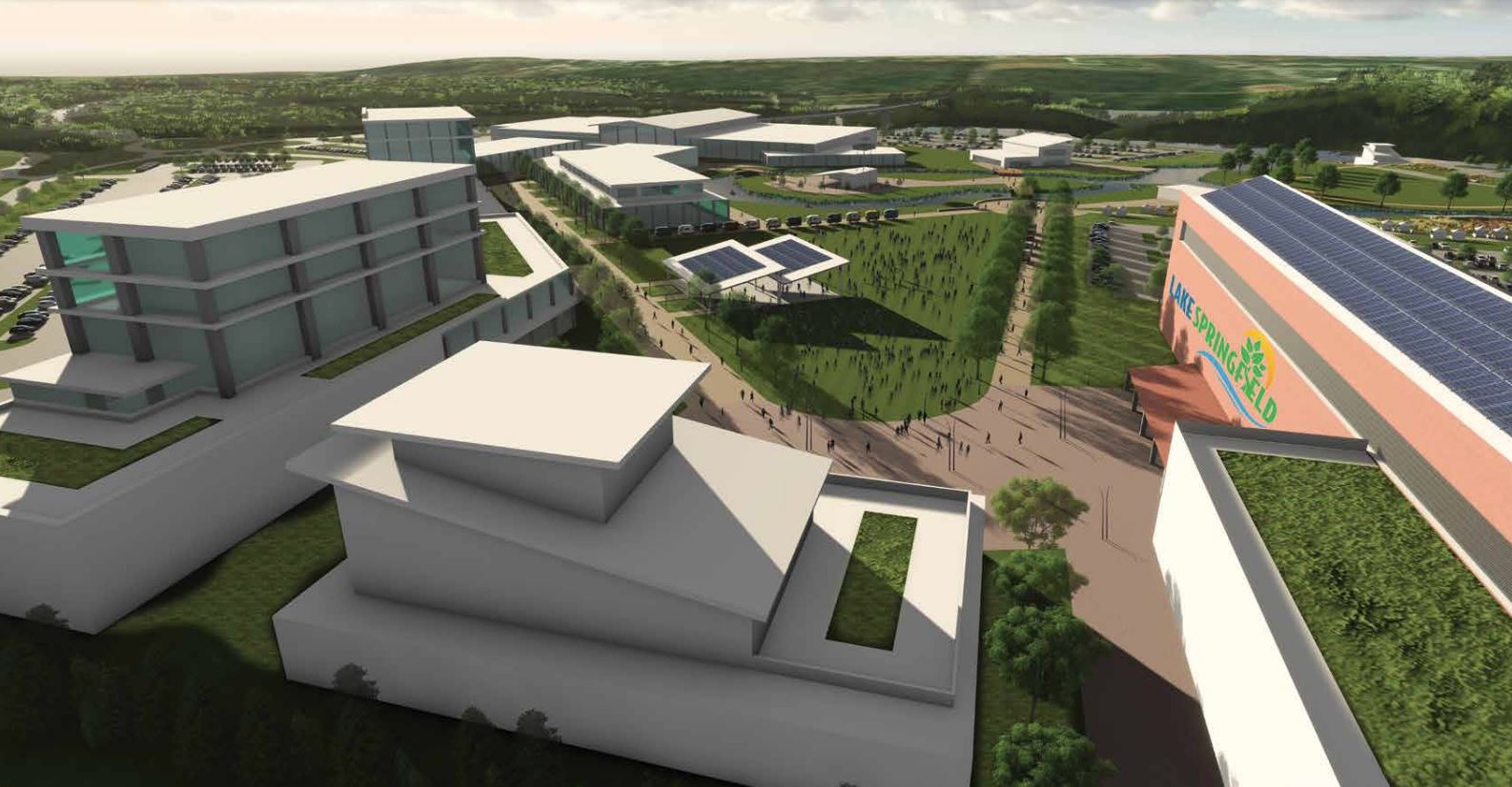
An entertainment district would likely be the more expensive of the two options, with an early cost estimate north of $1.2 billion. However, it would likely have a larger economic impact, in multiple respects. An entertainment district has the potential to create more jobs, more spending and more tax revenue for Springfield and Greene County. It could include an event venue, riverfront recreation and retail, restaurant and residential space, among other possibilities.
“When people come from out of town, we go to soccer tournaments, or huge events in the community — the Route 66 Festival — we want to stay in play, right? We want to go, we want to come into the community, we want to stay there, we want to play there, we want to forget about the car and we want to engulf ourselves in what we're experiencing,” Crawford, Murphy and Tilly vice president Steve Prange said.
An adventure hub, while likely cheaper at around $1 billion to build and with slightly less of an economic impact than an entertainment district, has significant potential of its own. It could similarly house retail stores and restaurants, as well as a convention center. It could capitalize on the landscape for outdoor amenities, such as a mountain bike park, an amphitheater and a water bypass channel around the dam to create “one of the world’s largest water trails,” connecting the James River north of Lake Springfield to Lake Taneycomo.
“There's not a lot of places in Springfield where we harness the power of water, and we're paying a lot of money to get that waterfront experience in Jordan Valley[…] this is going to be a massive development that will attract many different organizations, conferences, people to our area on a scale and size that we currently do not offer or come close to offering,” Prange said.
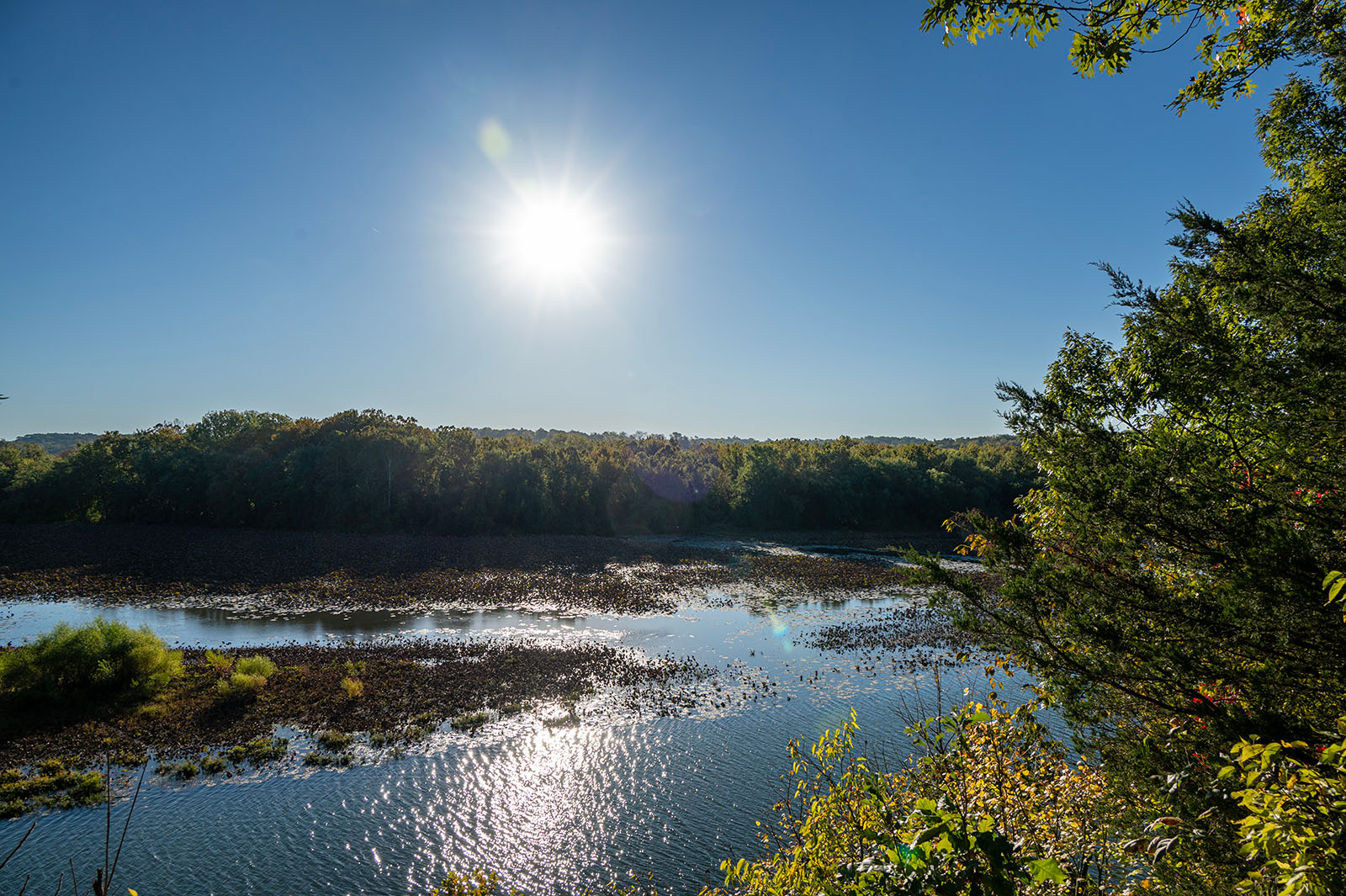
Both the entertainment district and an adventure hub could boast any variety of amenities, as laid out extensively in the master plan.
Ultimately, either of these two ideas would hinge on investment from private developers, and could come at a cost to taxpayers if a special taxing district is established to help offset certain infrastructure costs.
The future of the lake and dam
Farther north, private developers could also help expand the outdoor amenities provided at the Lake Springfield Park and Boathouse, which is currently managed by CU and the Springfield-Greene County Park Board. The entire Lake Springfield Plan area, at 1,000 acres, is currently owned by CU.
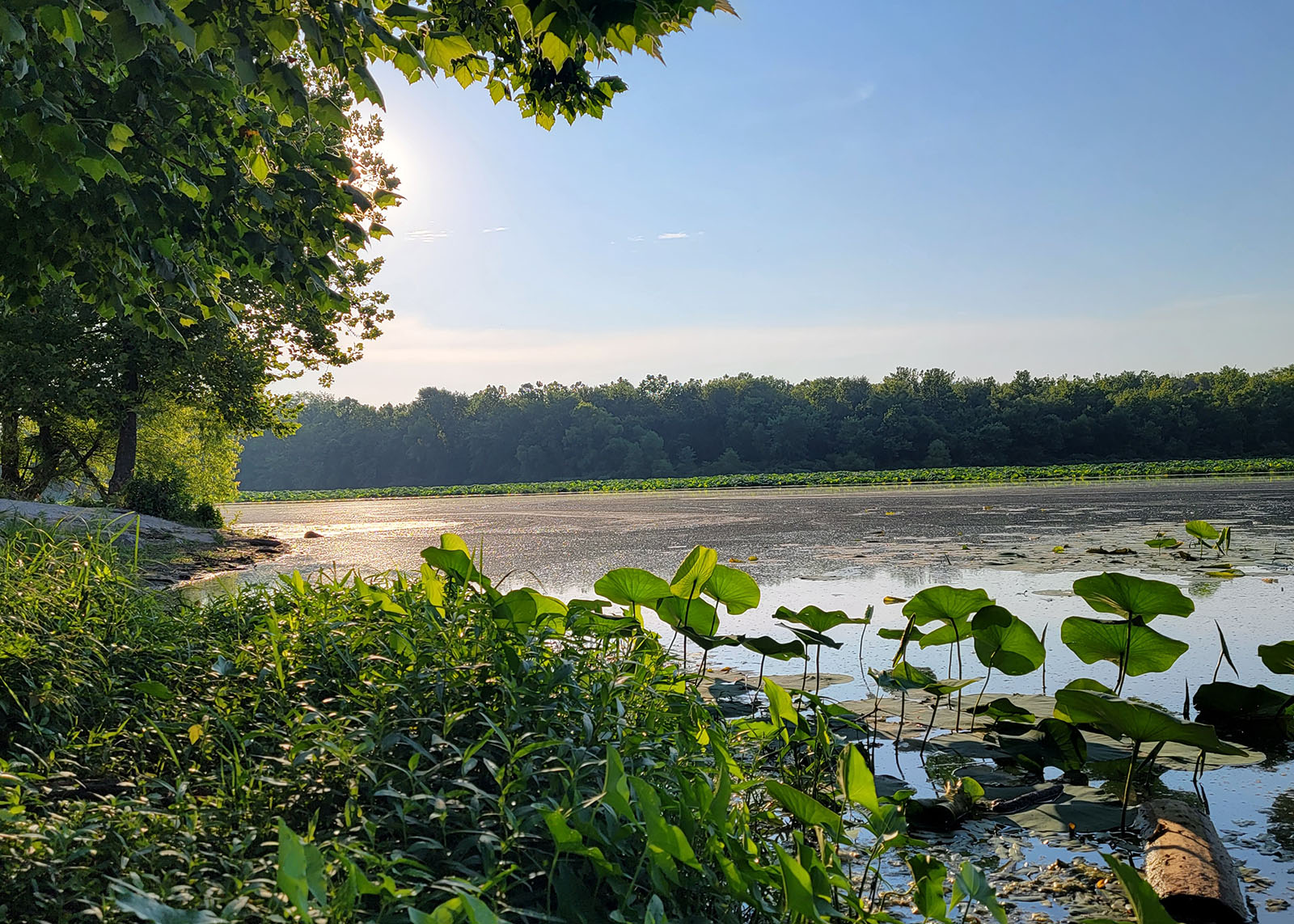
While testing revealed the water quality to be “in a really healthy shape” — though it will likely remain a no-swimming lake due to the threat of E. coli from agricultural runoff upstream — the lake could be in for a facelift. Clogged by invasive aquatic plants, and shallow in places due to years of sediment buildup from runoff of nearby development, the consultants — guided by public input and senior design and planning students at Missouri State University — explored the potential for the namesake of the master plan.
The possibilities start with whether or not Lake Springfield will remain a lake. With the dam — which Prange said is in “fantastic condition” — no longer needed to serve its original purpose, its outright removal, partial removal or the creation of a bypass channel for recreation and wildlife were all considered.
The long-term maintenance of the dam, which could cost nearly $2 million over 10-20 years, pales in comparison to the full removal of the dam, which could cost between $17 million and $44 million, with the cost of a partial removal and other modifications somewhere in between.
“After looking at all the different alternatives of what to do with the dam, I think our recommendation is to leave the dam in place, absolutely deal with that long term maintenance cost,” Prange said.

The continuously growing amount of sediment — at about 8,000 cubic yards per year — left unmanaged, could destroy the very asset the master plan looks to build around.
“If we don't do anything about Lake Springfield, it will eventually fill up and[...] cease to be a lake and you know, the plant life will take over and it will just become a wetland, basically,” Prange said.
Cost estimates to manage the sediment and return the lake to its as-built condition range between $35 million and $89 million. One idea looks to use the sediment as a tool to improve lake conditions and create a whole new amenity.
Rearranging the sediment — rather than removing it — could save outright removal costs, create depth, enhance water quality and add a unique “natural attractor:” eco-islands.
What are eco-islands?
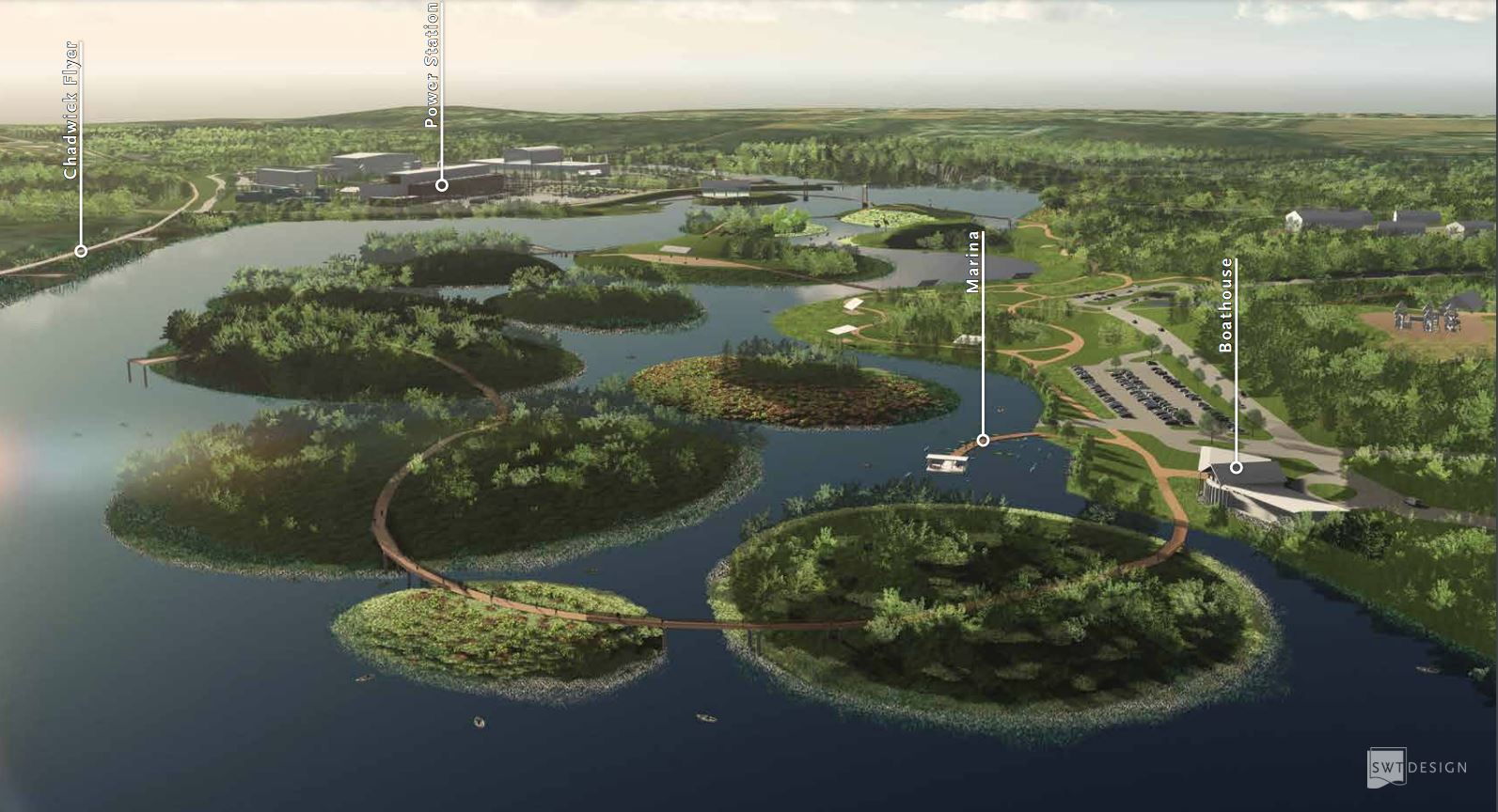
An eco-island is a man-made island or piece of land isolated from its surrounding lands. Over time, it becomes a small habitat for life inside a much larger ecosystem.
The eco-islands would be connected through a series of boardwalks, and would connect the north side of the lake to the south and the larger Springfield and regional trail system to the area.
“It'll provide just an awesome opportunity to enhance that, getting people with all abilities and all accessibility challenges out into the lake out into the water area that they really can't do right now,” Prange said.
The Lake Springfield Boathouse could be in for a significant expansion, including the addition of a marina dedicated to kayaks and canoes, new pavilions, a new playground, “a total remake of the park as it is today.”
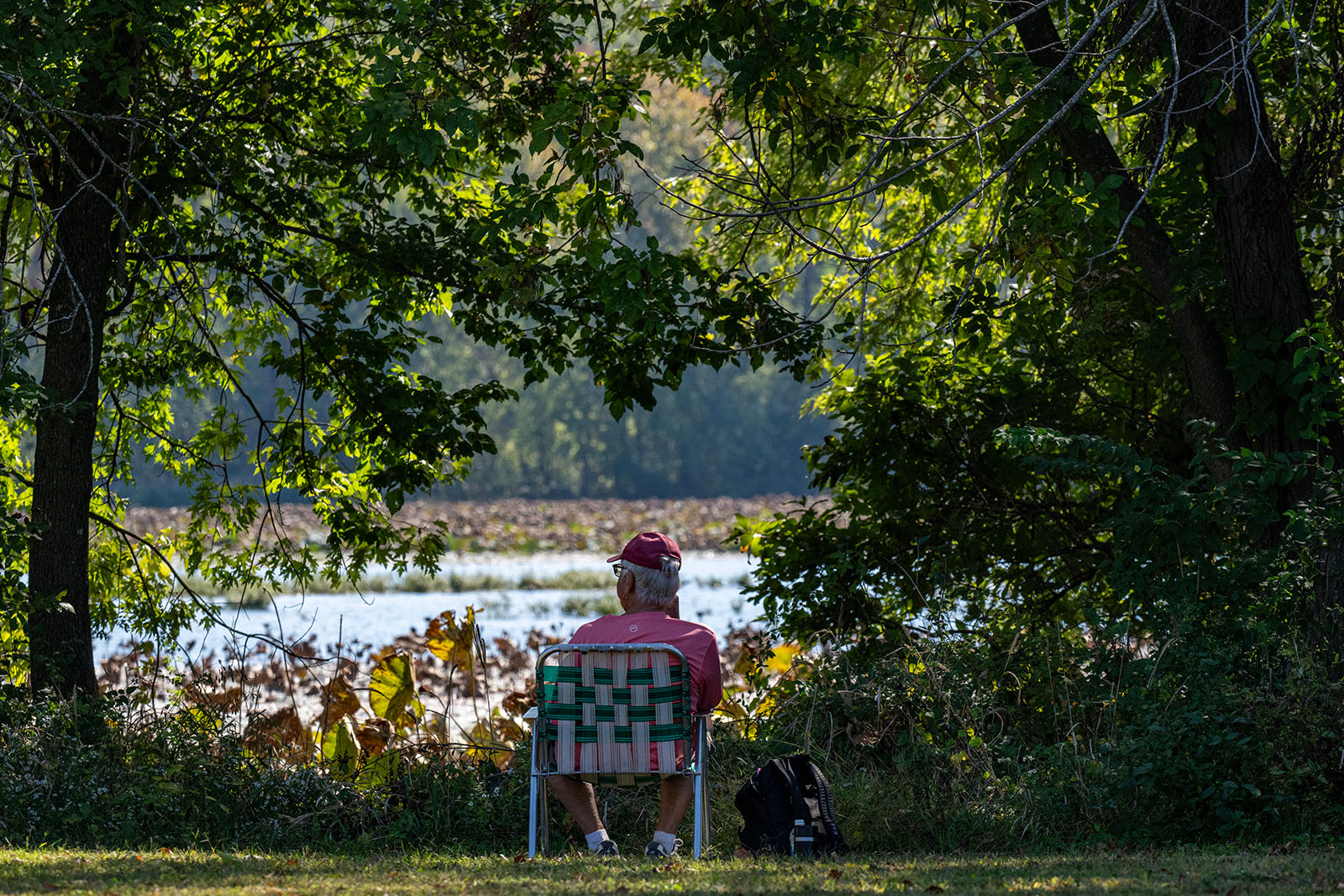
Prange acknowledged the financial constraints of the Springfield-Greene County Park Board, and suggested it may also require private investment, potentially privatizing what is currently a public asset. Prange emphasized it would ultimately be a public-private partnership, and that the master plan would allow the city and CU to set the framework for how land is used for certain projects.
Scott said she anticipates there to be some amount of public dollars spent in and around Lake Springfield, though it is still too early to determine how much and for what. Prange said that the master plan will give the city a “great platform” to apply for additional grants.
A new east-west road is possible
Public funding will inevitably come into the mix when it comes to accessibility, a major component of the Lake Springfield Plan, in multiple respects. Boat access, pedestrian access and vehicular access were all considered in how to make the lake and any future development more accessible for more people.
Currently, the only way to access the Lake Springfield Park and Boathouse is via Kissick Avenue, a narrow, winding, two-lane road that undergoes turns and name changes between National Avenue to the west and U.S. Highway 65 to the east.
Consultants identified four different options, including the closure of Kissick, which the public was in “overwhelming” support of — making the roadway over the dam open to pedestrian traffic only — and a new east-west arterial road that could extend as far west as Kansas Expressway.
“That alignment is out there, it’s being preserved,” Prange said. “And there's an opportunity, it is a very expensive section of road that would basically be our east-west arterial, it'd be our parallel south of James River.”

Maintaining Kissick and creating an entryway from an east-west road to the south — not of the same level as a larger arterial — are also being considered in the plan.
In order to enhance pedestrian and water access, the plan proposes to improve connectivity to surrounding neighborhoods, add new boat ramps on both sides of the lake, as well as new trailheads and pedestrian bridges.
The plan aims to increase not only local access, but regional traffic to the area. Prange said it has the potential to become a “national attractor” and have a significant economic impact — in terms of investment and spending.
Continued public interest
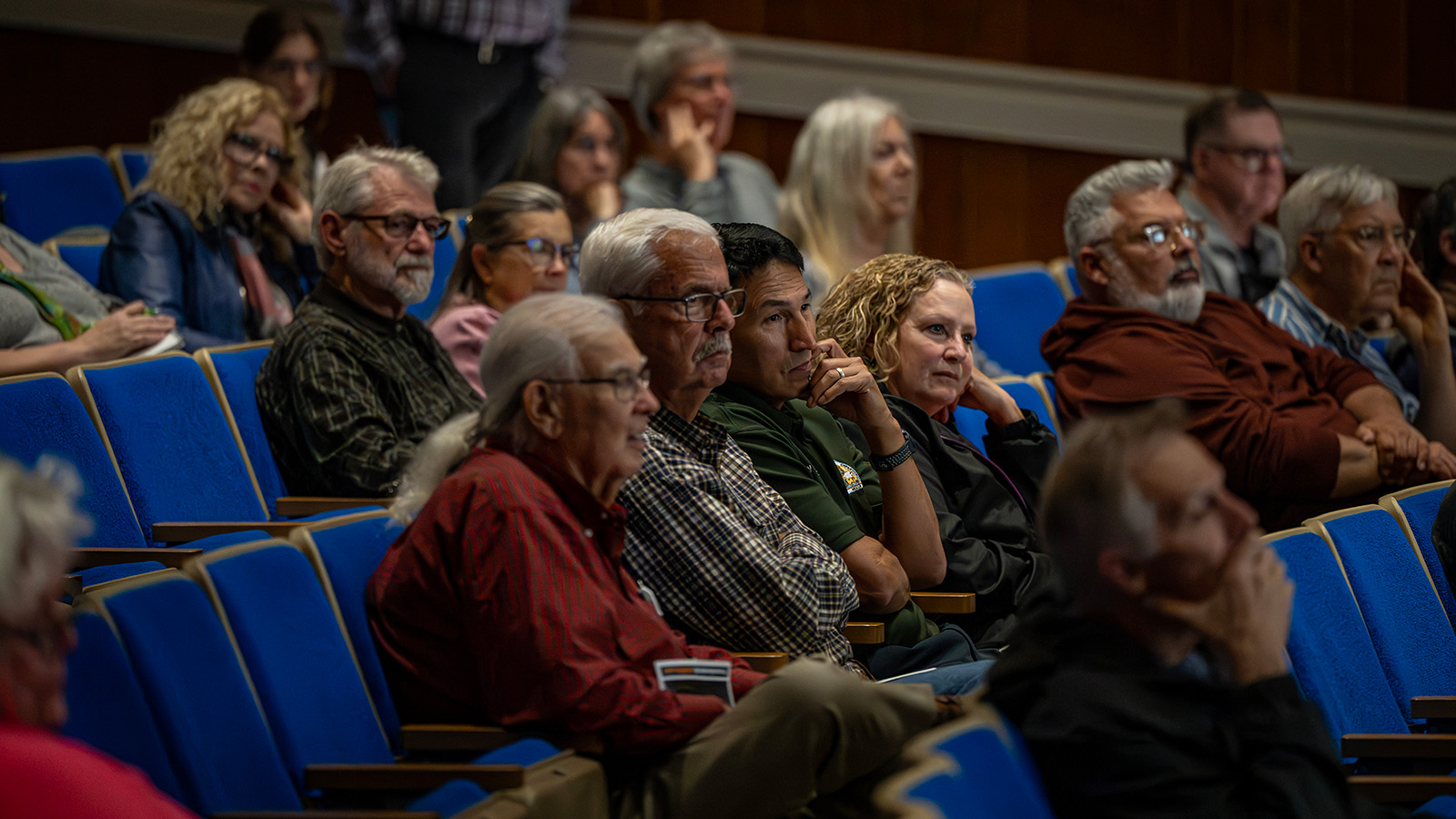
Traffic was among the primary outstanding concerns by the nearly 100 members of the public that attended the Oct. 12 meeting, as well as water quality, depth of the lake and the utility waste landfill southwest of the power station.
Up until now, the planning process sought public input from a variety of avenues — via focus groups, social media and surveys — and feedback from a variety of stakeholders and demographic groups, including Native American populations tied to the land and the watershed, according to Prange.
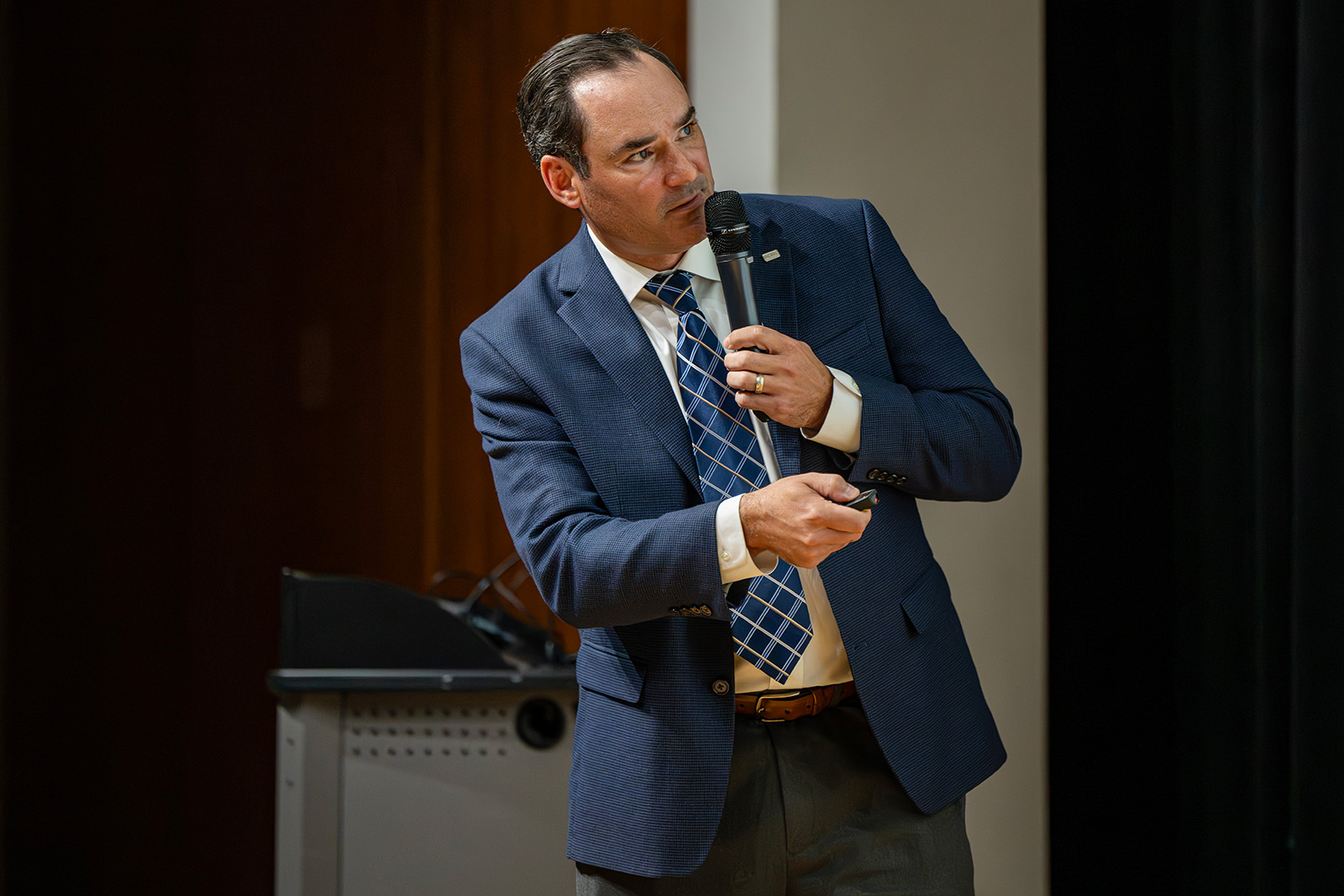
In total, the stakeholders involved in the plan interacted with and received input from over 1,000 people through various means of communication, according to Francine Pratt of Pratt Consultants, who was brought on to help with the public engagement process.
Even still, community members continued to express a variety of concerns with different components of the project, and any potentially negative impact certain pieces of the development could have on the surrounding area. While approaching the conclusion of the master plan, continued public feedback was encouraged as Lake Springfield, overall, is still in the early stages of this future.
However, several attendees voiced excitement for Lake Springfield's potential, and commended the work done on the plan to help envision it.
While the economic impact, especially of an entertainment district or adventure hub, is obvious, the plan seeks for it to strike a balance with the social impact, which could be realized through a variety of amenities, from the park to the trail network to an education center. The opportunities for Lake Springfield, while narrowed down in the master plan, remain plentiful.
Ultimately, Prange emphasized that realizing the full potential of Lake Springfield was a long game, and that he doesn’t see phases of it happening sooner than 10 years. Following the formal adoption of the plan, the city can begin implementation and take the first of many steps to make this vision a reality.
